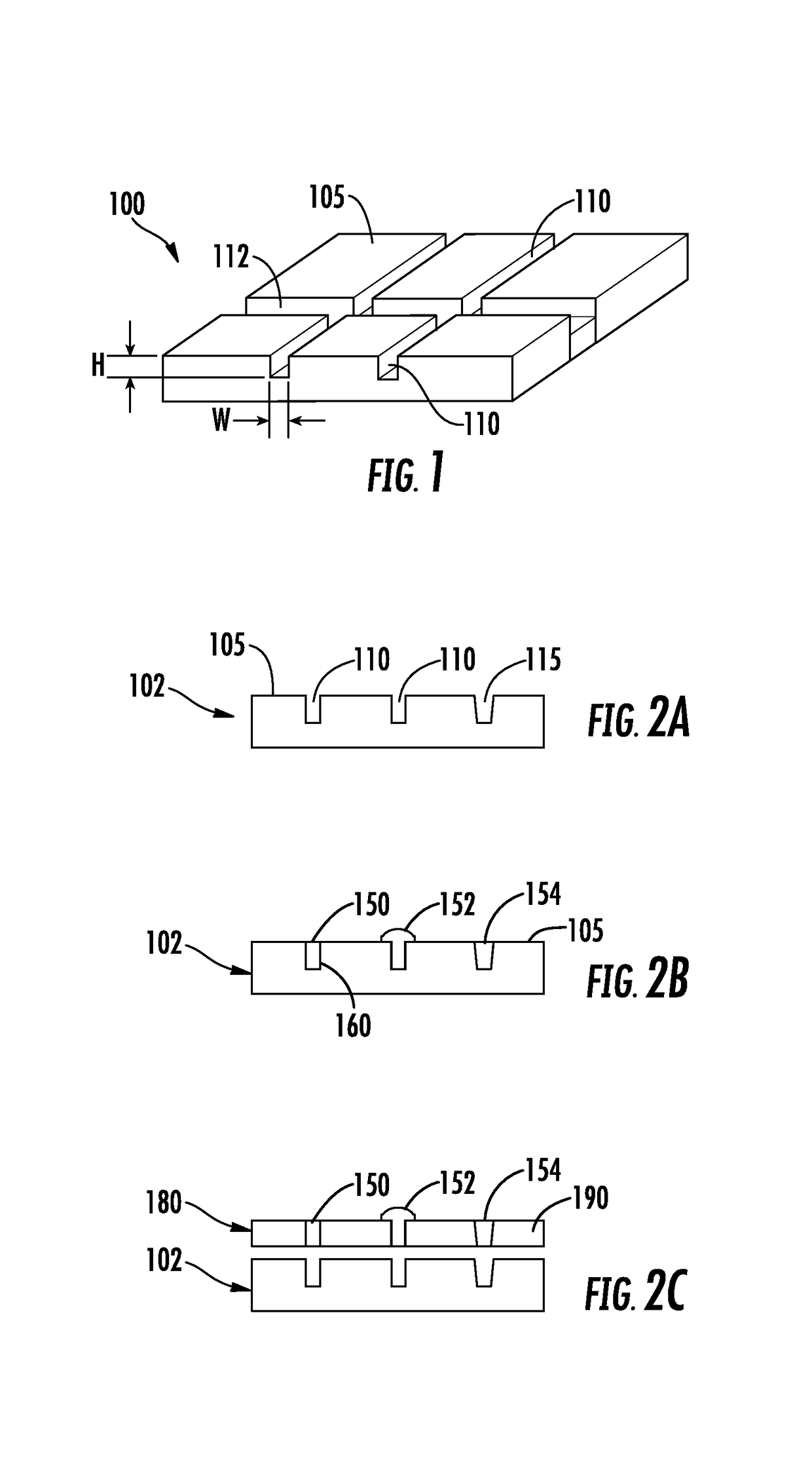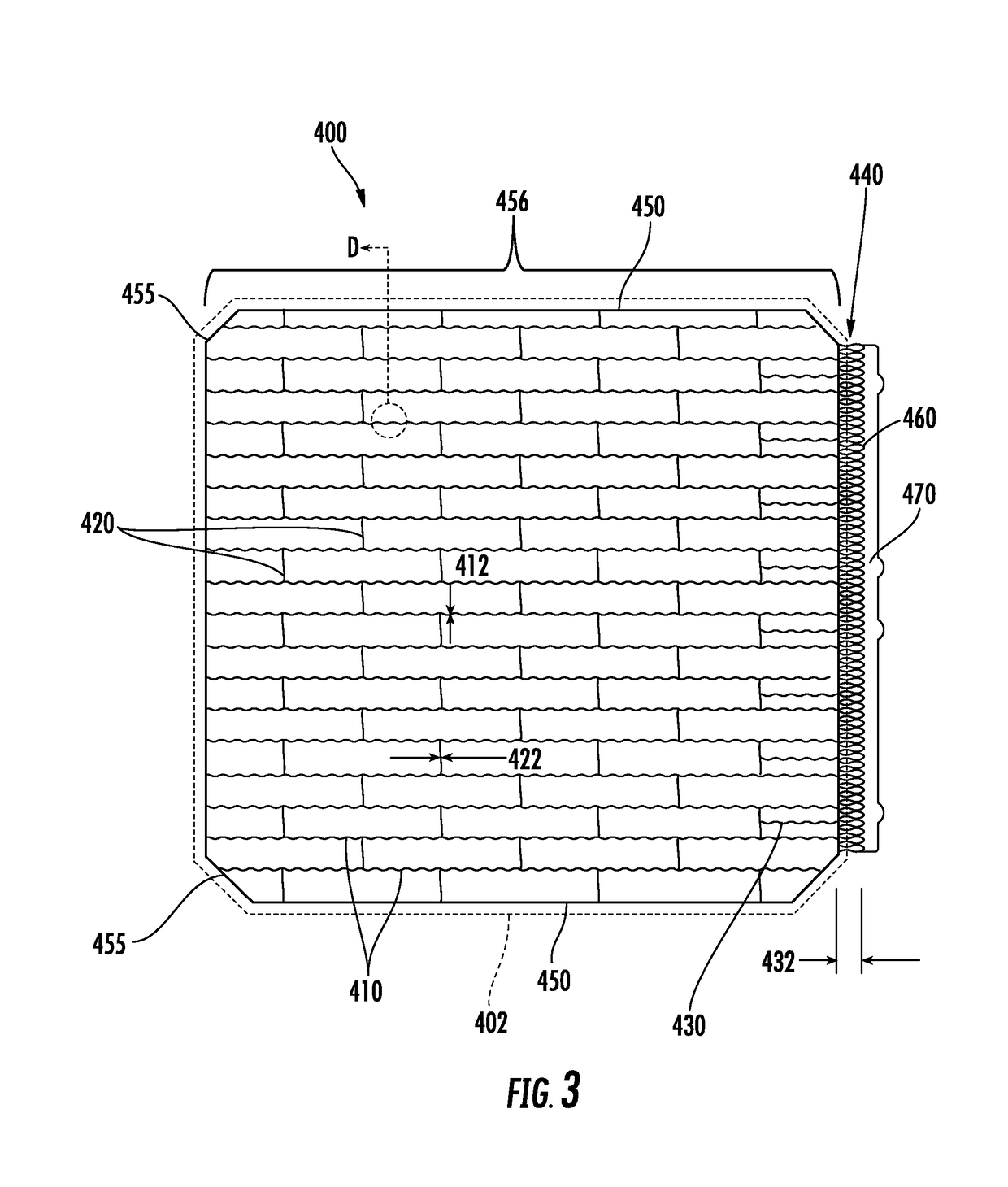Cell-to-cell interconnect
a cell-to-cell interconnection and cell technology, applied in photovoltaic energy generation, semiconductor devices, electrolytic processes, etc., can solve the problems of solar cell circuits that may experience failures in the field, cracking solar cells at the connection, and easy breakage and warping of the interconnection between cells
- Summary
- Abstract
- Description
- Claims
- Application Information
AI Technical Summary
Benefits of technology
Problems solved by technology
Method used
Image
Examples
Embodiment Construction
[0018]Metallization of solar cells is conventionally achieved with screen printed silver pastes on the surface of the cell, and cell-to-cell interconnections that utilize solder-coated ribbons. For a given aspect ratio of a metal conduit, the electrical resistance is inversely proportional to its footprint. Therefore, the cell metallization or cell-to-cell interconnection design usually trades off between shading and resistance for the most optimized solar cell module power output. The metallic articles of the present disclosure, which shall also be referred to as grids or meshes, can be used to replace conventional silver paste and solder coated ribbons and have adaptable features that allow for decoupling of factors that conventionally require trade-offs between functional requirements.
[0019]In Babayan et al., U.S. patent application Ser. No. 13 / 798,123, issued as U.S. Pat. No. 8,916,038 and incorporated herein by reference, electrical conduits for semiconductors such as photovolt...
PUM
| Property | Measurement | Unit |
|---|---|---|
| angle | aaaaa | aaaaa |
| aspect ratio | aaaaa | aaaaa |
| aspect ratio | aaaaa | aaaaa |
Abstract
Description
Claims
Application Information
 Login to View More
Login to View More - R&D
- Intellectual Property
- Life Sciences
- Materials
- Tech Scout
- Unparalleled Data Quality
- Higher Quality Content
- 60% Fewer Hallucinations
Browse by: Latest US Patents, China's latest patents, Technical Efficacy Thesaurus, Application Domain, Technology Topic, Popular Technical Reports.
© 2025 PatSnap. All rights reserved.Legal|Privacy policy|Modern Slavery Act Transparency Statement|Sitemap|About US| Contact US: help@patsnap.com



